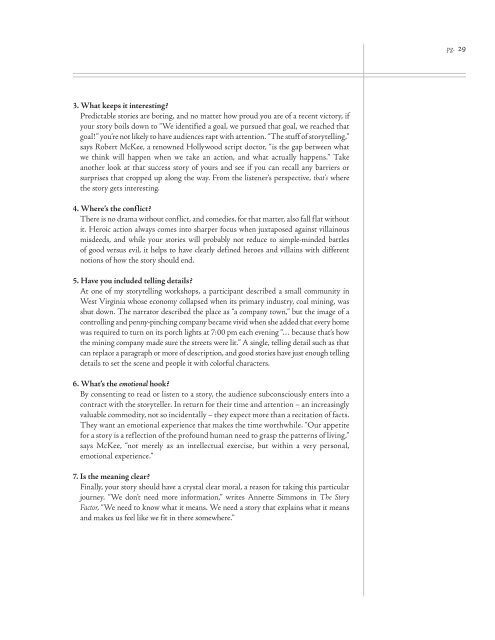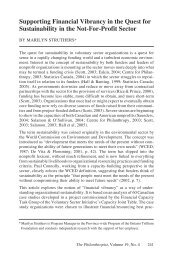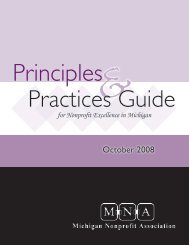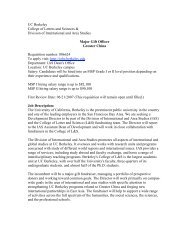Why Bad Presentations Happen to Good Causes - The Goodman ...
Why Bad Presentations Happen to Good Causes - The Goodman ...
Why Bad Presentations Happen to Good Causes - The Goodman ...
Create successful ePaper yourself
Turn your PDF publications into a flip-book with our unique Google optimized e-Paper software.
3. What keeps it interesting?<br />
Predictable s<strong>to</strong>ries are boring, and no matter how proud you are of a recent vic<strong>to</strong>ry, if<br />
your s<strong>to</strong>ry boils down <strong>to</strong> “We identified a goal, we pursued that goal, we reached that<br />
goal!” you’re not likely <strong>to</strong> have audiences rapt with attention. “<strong>The</strong> stuff of s<strong>to</strong>rytelling,”<br />
says Robert McKee, a renowned Hollywood script doc<strong>to</strong>r, “is the gap between what<br />
we think will happen when we take an action, and what actually happens.” Take<br />
another look at that success s<strong>to</strong>ry of yours and see if you can recall any barriers or<br />
surprises that cropped up along the way. From the listener’s perspective, that’s where<br />
the s<strong>to</strong>ry gets interesting.<br />
4. Where’s the conflict?<br />
<strong>The</strong>re is no drama without conflict, and comedies, for that matter, also fall flat without<br />
it. Heroic action always comes in<strong>to</strong> sharper focus when juxtaposed against villainous<br />
misdeeds, and while your s<strong>to</strong>ries will probably not reduce <strong>to</strong> simple-minded battles<br />
of good versus evil, it helps <strong>to</strong> have clearly defined heroes and villains with different<br />
notions of how the s<strong>to</strong>ry should end.<br />
5. Have you included telling details?<br />
At one of my s<strong>to</strong>rytelling workshops, a participant described a small community in<br />
West Virginia whose economy collapsed when its primary industry, coal mining, was<br />
shut down. <strong>The</strong> narra<strong>to</strong>r described the place as “a company <strong>to</strong>wn,” but the image of a<br />
controlling and penny-pinching company became vivid when she added that every home<br />
was required <strong>to</strong> turn on its porch lights at 7:00 pm each evening “… because that’s how<br />
the mining company made sure the streets were lit.” A single, telling detail such as that<br />
can replace a paragraph or more of description, and good s<strong>to</strong>ries have just enough telling<br />
details <strong>to</strong> set the scene and people it with colorful characters.<br />
6. What’s the emotional hook?<br />
By consenting <strong>to</strong> read or listen <strong>to</strong> a s<strong>to</strong>ry, the audience subconsciously enters in<strong>to</strong> a<br />
contract with the s<strong>to</strong>ryteller. In return for their time and attention – an increasingly<br />
valuable commodity, not so incidentally – they expect more than a recitation of facts.<br />
<strong>The</strong>y want an emotional experience that makes the time worthwhile. “Our appetite<br />
for a s<strong>to</strong>ry is a reflection of the profound human need <strong>to</strong> grasp the patterns of living,”<br />
says McKee, “not merely as an intellectual exercise, but within a very personal,<br />
emotional experience.”<br />
7. Is the meaning clear?<br />
Finally, your s<strong>to</strong>ry should have a crystal clear moral, a reason for taking this particular<br />
journey. “We don’t need more information,” writes Annette Simmons in <strong>The</strong> S<strong>to</strong>ry<br />
Fac<strong>to</strong>r, “We need <strong>to</strong> know what it means. We need a s<strong>to</strong>ry that explains what it means<br />
and makes us feel like we fit in there somewhere.”<br />
pg. 29













